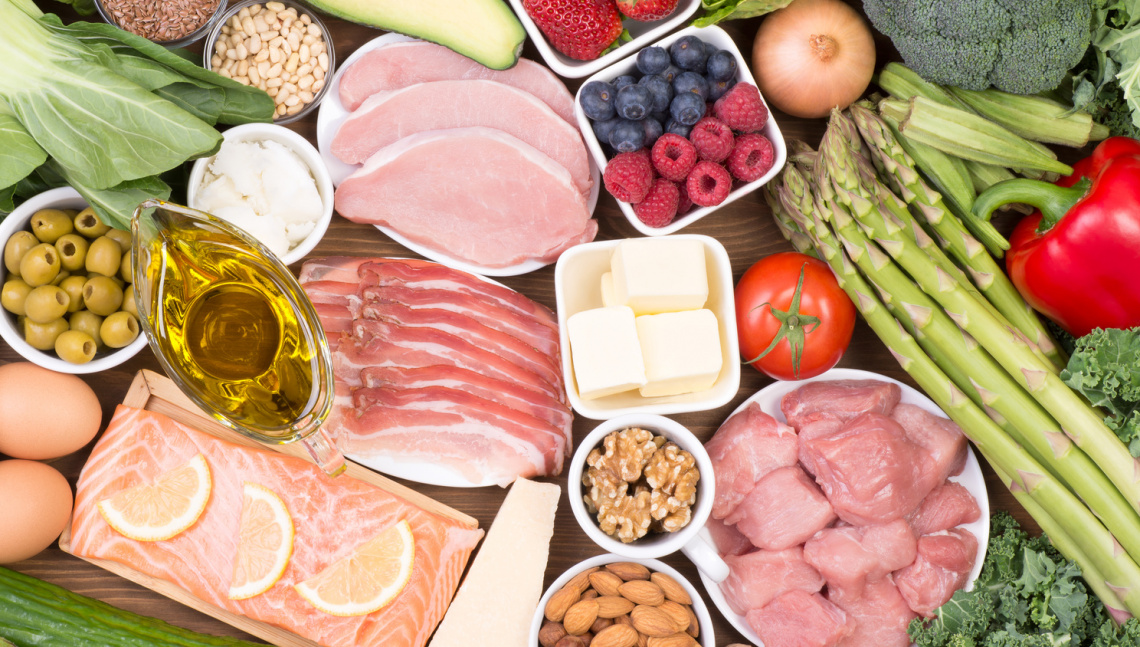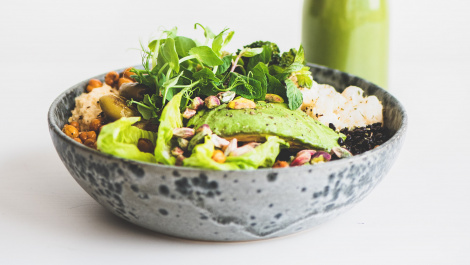To clarify: we’re not advocating for or denying the effectiveness of any diet. We’re simply here to help you understand the basic principles and make an informed decision as to what may or may not work for you! Let’s take a look at the Ketogenic Diet.
The Basics of the Ketogenic diet
This diet is based on findings in the early 20th century when scientists discovered that overfeeding could be a significant factor in seizures. This led doctors and scientists to question whether one could achieve the benefits of fasting without actually fasting. In the 1920s, a Dr Russel Wilder and others experimented with what he called the “Ketogenic diet”. The results proved effective in children with epilepsy – their seizures stopped and many saw positive changes in behaviour and mental performance. The diet found its way into medical journals and has been around ever since.
The Ketogenic diet soon became a weight loss tool. It is based on low (almost zero) carbohydrate, adequate protein and high-fat consumption aimed at curbing appetite, enhancing physical and mental performance and preventing potential illnesses.
How does it work?
Ketones are what your body produces as an alternative fuel when there is little or no blood sugar in supply (i.e. glucose which is normally produced by carbohydrates) in supply. Your liver produces ketones and fatty acids when you eat very few carbs and moderate amounts of protein – the ketones replace the glucose as an energy source. This then forces the body to burn fat rather than carbohydrates. It is an alternative fuel that gets used for your body and brain function.
As your body converts to running almost entirely on fat, your insulin levels become very low. With low insulin levels it becomes easier to access your fat stores and burn them off for energy – hence the weight-loss benefits.
Along with the weight-loss comes less hunger, and a sustained supply of energy that keeps you focused and alert.
What’s allowed on the Keto diet?
Meat, Fish and Fats
- Unprocessed, organic meat. Remember that Keto is high-fat, not high-protein, so it doesn’t need to be eaten in excess.
- Most fish and seafood, especially fatty fish like salmon.
- Fat in cooking, like butter or coconut fat, and add plenty of olive oil
- High-fat dairy products, like cheese, yogurt and heavy cream
- Nuts, in moderation
Vegetables
- Vegetables that grow above the ground
- Green veg (typically lower in carbs)
- Leafy vegetables like spinach and all lettuce varieties
What should you avoid on the Ketogenic diet?
- Processed meats and cold cuts. Things like sausages often have added carbs
- Vegetables that grow below ground or are high-carb. Potatoes, rice, pasta, oats
- Legumes such as beans and lentils
- Sugar. Avoid sweets, most fruits, natural sweeteners and packaged treats.
Everything in moderation
Where many people seem to fail with the diet is in the assumption that they can eat without restraint, as long as they avoid all carbohydrates.
That is a very distorted interpretation of the diet’s parameters. You might be able to eat all the types of fats available to you, but not as much as you can. The point of the fat is to curb unnecessary hunger and keep you fuller for longer. If you keep eating whenever you feel like it, you’re just loading your body with fats. This can seriously impact your liver, and escalate a plaque build-up in your arteries. So, be careful and eat in moderation.
Dangers of the Keto Diet
People with diabetes, who are on medication for high blood pressure or pregnant must avoid the Ketogenic diet. There has also been research suggesting that women do not enjoy the same results on this diet as a result of naturally lower levels of metabolic efficiency.







Comments